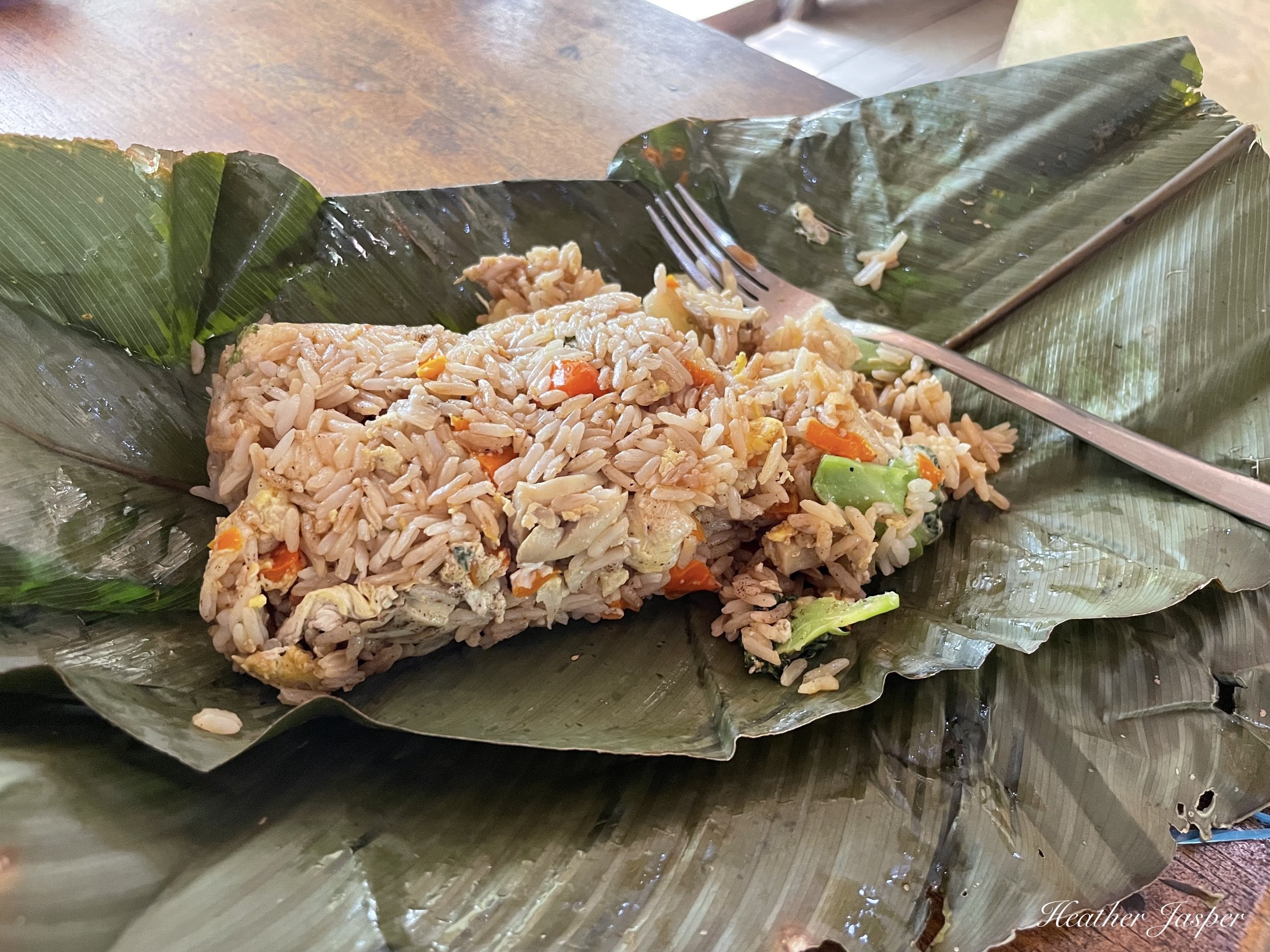Travel Tip 95
Happy Earth Day!
Food packaging is one of the biggest waste culprits but in the Peruvian rainforest bijao leaves are the most traditional and most common packaging.
How to be a more sustainable traveler?
The idealistic 1960s gave us the first Earth Day on April 22, 1970. Since then, every year we set goals to reduce our impact on the planet in innumerable ways. Like New Year’s resolutions, the results are mixed, but I still think the intention and effort count.
As a person who writes about travel, the most obvious thing for me to write about is how to use more sustainable modes of transportation, and how to use them less. The thing is, does that really make sense when I’m always trying to get people in Europe and North America to come to South America? Is it hypocritical of me to write about both sustainable travel and South America?
Should I tell people to only travel by train?
I’m rereading Paul Theroux’s The Old Patagonia Express, published in 1979 about a trip he took in 1977 from Boston to Patagonia, by train. South America by train wasn’t easy then and isn’t easy now, but there are still a few places you can travel by train, as I show in one of my blogs below.
How to leave less waste behind when we travel?
My 45th newsletter suggested three ways we can create less waste: not buying disposable plastic water bottles, bringing our own toiletries in refillable containers and being conscious of our food waste.
I still think people should travel to South America, so here are ways to make your trip more sustainable.
Xapiri Ground is a non-profit that sells art and sustainable souvenirs from communities in the Peruvian rainforest.
Avoid single-use plastics
We need to go beyond avoiding disposable plastic bottles and avoid all single-use plastics. When I travel, that’s most often shopping bags and food containers. Many places now sell fabric bags as souvenirs, so if you forget to bring a reusable bag on your travels, buy a fabric one and skip the plastic altogether.
Olinda Silvano weaves fabric from bark and paints with natural dyes like her ancestors always have.
Buy sustainable souvenirs
On April 18th, the world-famous Shipibo artist Olinda Silvano came to Cusco for a screening of a new documentary about her at Xapiri Ground, a local non-profit that supports Amazonian communities. It was an honor to meet her and to be able to contribute to her work supporting artists from the Peruvian rainforest. When Indigenous communities in the rainforest are able to earn a living from their art, they can stay on their land and defend it from illegal mining and logging.
How sustainable can you be?
Travel is often about challenge as much as it’s about relaxation. We challenge ourselves to complete the hike, to try surfing for the first time, to see as many museums as possible in one week or to communicate in a foreign language. We can also challenge ourselves to never use plastic forks or plastic shopping bags. I don’t think of sustainable traveling as hard, but as a challenge. I make it a game and I don’t always win, but I always try.
I have three blogs and an article for you this week!
Train travel is still possible in South America!
I answer the questions I get all the time from my readers and followers: Why take the train to Machu Picchu? Which train to choose? Should you buy the ticket departing from Cusco or from Ollantaytambo? Why are the trains so expensive? Is the Vistadome worth the extra cost? Click on the blog title above for the answers to these and many more questions.
I visited the remote Andean village of Choquecancha a week ago and loved it. This blog tells you how to get there and what you need to know before you visit. You leave some carbon behind driving there, but supporting rural communities like this is an important part of sustainable travel in Peru.
A healthy rainforest has wide loops of muddy river that are constantly changing course.
I remember learning that we need to save the rainforest in school in the 80s but without ever seeing it, the goals seemed nebulous. Now that I’ve traveled in the Peruvian Amazon rainforest several times, and met scientists working on conservation there, I have some specific ideas about ways we can save the rainforest.
When gold miners have left mercury-poisoned ponds from their dredges, regenerative travel is harder but not impossible. We can visit the pockets of healthy forest and see the wildlife that is still hanging on and needs protection.
Article
I wrote this article for Frommer’s to explain the concept of regenerative travel, which aims to leave a place better than you found it. Some areas of the rainforest have been destroyed, but forest can regenerate and regenerative travel is one way international travelers can support the rainforest.







